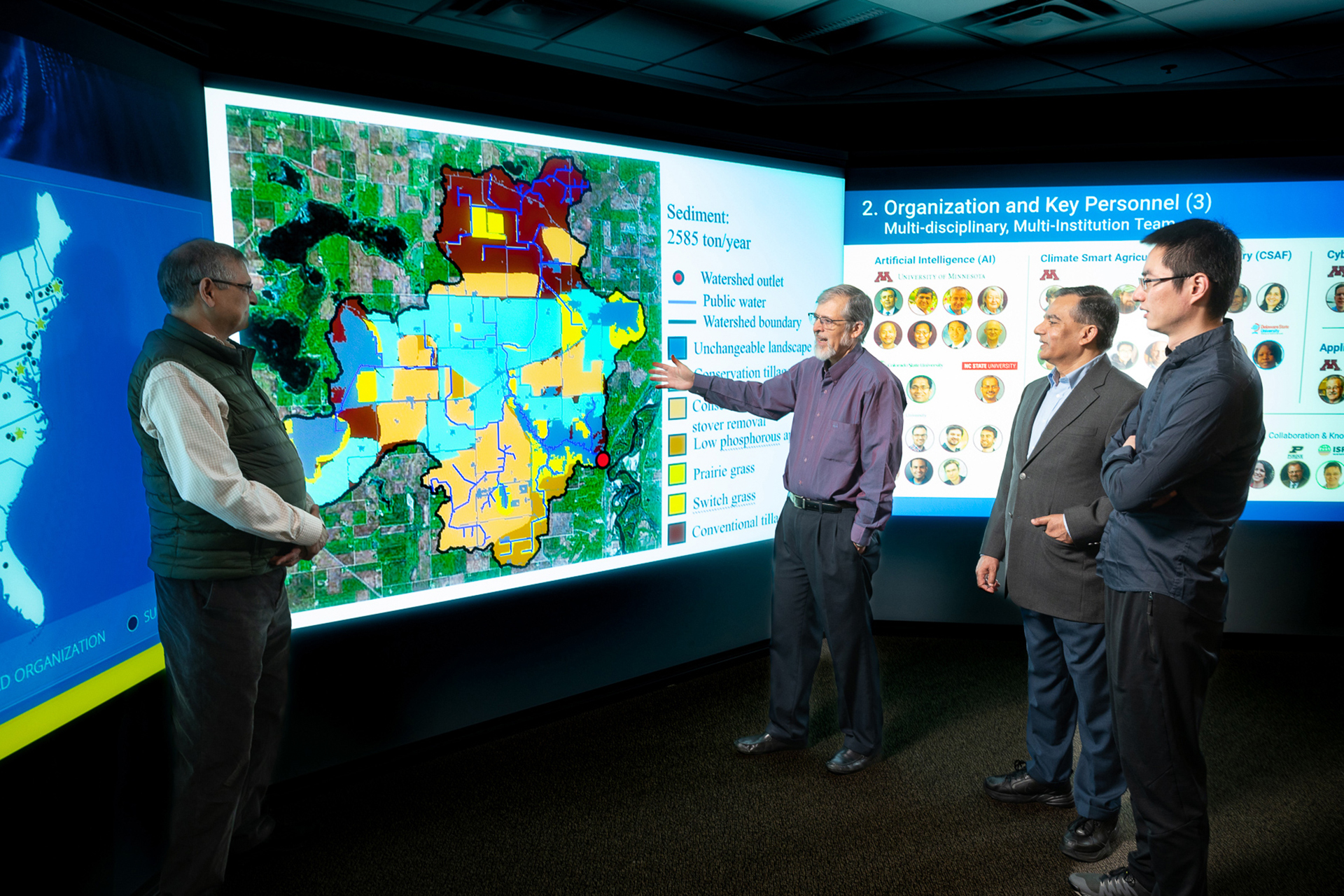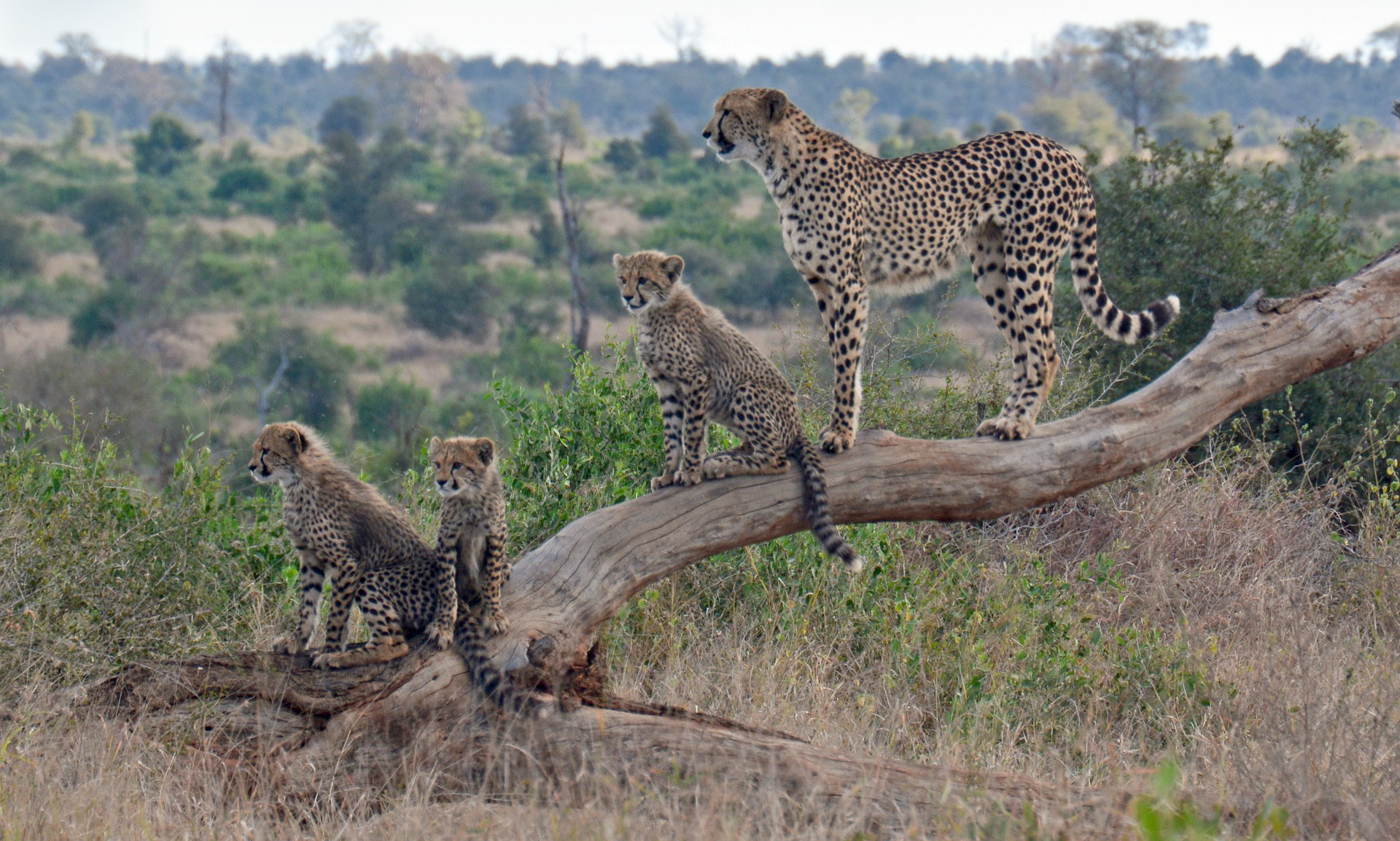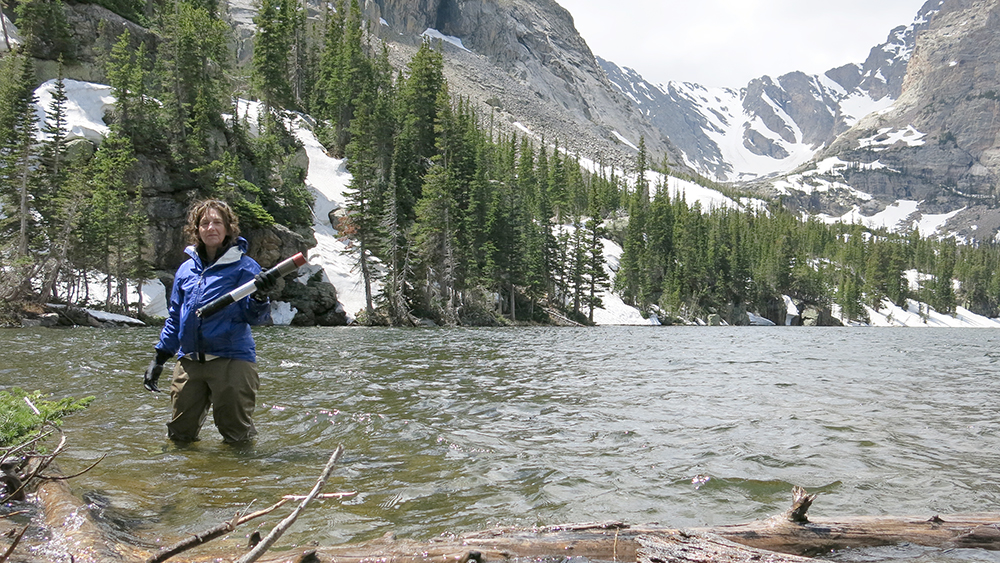Paul Evangelista
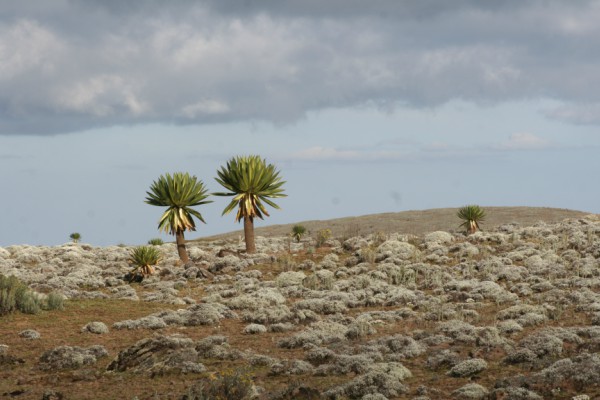
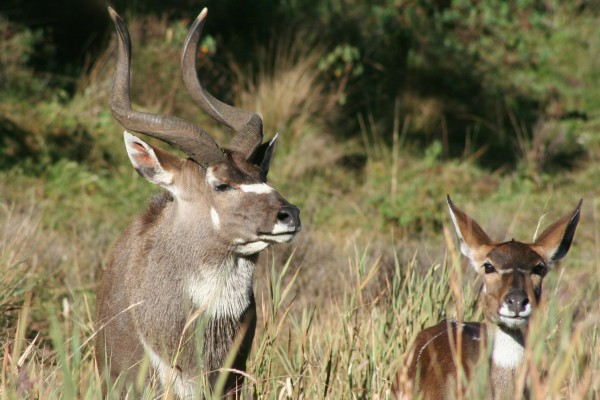
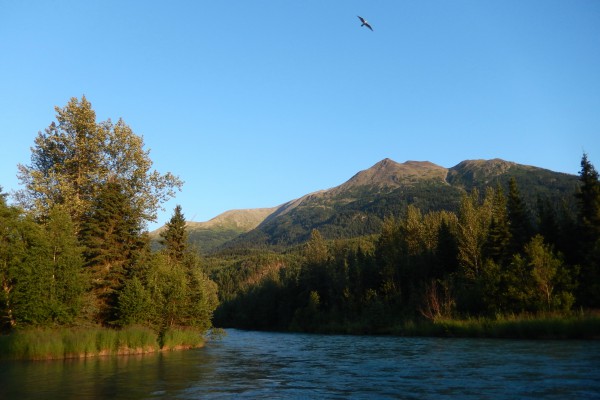
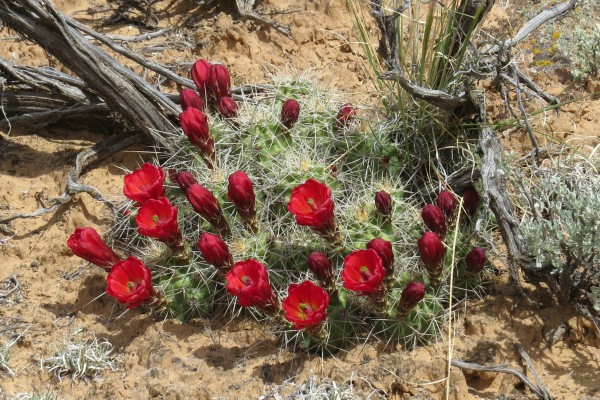
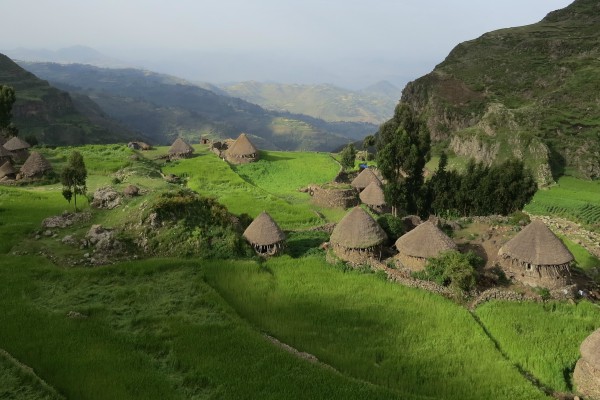
Curriculum Vitae
Paul H. Evangelista, PhD
Senior Research Scientist, Natural Resource Ecology Laboratory
Assistant Professor, Department of Ecosystem Science and Sustainability
Colorado State University, Fort Collins, CO 80523-1499
Phone: (970) 491-2302; Fax: (970) 491-1965
Email: paul.evangelista@colostate.edu
Education
Colorado State University Natural Resource Management B.S. 1999
Minor: Geographic Information Systems
Colorado State University Forest Ecology M.S. 2003
Colorado State University Ecosystem Management Ph.D. 2009
Professional Appointments
2020-present Assistant Professor, Forest and Range Stewardship, CSU
2020-present Ranch Manager, Utterback Ranch, Colorado State University Research Foundation
2014-present Affiliate Faculty, University of Oslo, Norway
2019-2020 Affiliate Faculty, Hawassa University, Ethiopia
2016-2020 Affiliate Faculty, Addis Ababa University, Ethiopia
2013-2016 Affiliate Faculty, University of Buea, Cameroon
2012-present Assistant Professor, Department of Ecosystem Science and Sustainability, CSU
2009-present Affiliate Faculty, Graduate Degree Program in Ecology (GDPE), CSU
2004-2007 Systems Ecologist, U.S. Secretary of Interior’s Advisory Committee for the Grand-Staircase Escalante Monument, Utah
1999-2009 Research Associate, Natural Resource Ecology Laboratory, CSU
Current Research
Combating Illegal Cheetah Trafficking: An Adaptive Management Strategy for Building Regional and National Capacity in the Horn of Africa
Principal Investigator; sponsored by U.S. Fish and Wildlife Service
Testing Applications of Virtual Fencing Technologies for Livestock Management, Range Improvement and Wildlife Conservation in a Semi-arid Prairie Ecosystem
Principal Investigator; sponsored by The Nature Conservancy
Research Opportunities for Emerging Technologies in Virtual Livestock Fencing and Potential for Mitigating the Effects of Climate Change on Western Ranches
Principal Investigator; sponsored by CSU One Health Institute
Mapping and Monitoring Invasive Cheatgrass after the Mullen Fire in Medicine Bow National Forest, Wyoming
Principal Investigator, sponsored by U.S. Department of Agriculture, U.S. Forest Service
Using Large-scale Databases to Model Invasive Species Distributions across the Landscape
Principal Investigator; sponsored by U.S. Geological Survey
Developing, Evaluating and Refining a Multiscale Iterative Habitat Modeling Approach for Multiple High Priority Invasive Species
Principal Investigator; sponsored by U.S. Geological Survey
Promoting Forest Health and Resiliency through Forest Carbon Markets: Exploring New Technologies and Opportunities for Colorado Landowners
Principal Investigator; sponsored by McIntire-Stennis Program, U.S. Department of Agriculture.
Western Mountain Initiative – Central Rocky Mountains: Detecting Algae Blooms with Remote Sensing in Alpine Lakes of Rocky Mountain National Park.
Co-Investigator, sponsored by U.S. Geological Survey
Cultivating Networks for Forest Science Innovation and Discovery through the Development of Sustainable Data Infrastructure at the Colorado State Forest Service
Co-Investigator; sponsored by U.S. Department of Agriculture, U.S. Forest Service
Synergistic Activities
Western Ranch Management and Ecosystem Stewardship Program
2019-present, Program Director
The Western Ranch Management and Ecosystem Stewardship Program is a developing academic and research initiative aimed at addressing today’s challenges of ranching in a rapidly changing world. Our program is founded on understanding the diverse ecosystems that define western landscapes, and the natural resources and processes that support ranching communities. We work closely with ranch owners, managers and stakeholders to identify education and research needs specific to the Rocky Mountain West.
NASA DEVELOP
2011-present, Principal Investigator/Scientific Advisor: The NASA DEVELOP Program is a nationwide program that provides funding for student interns to work within selected U.S. institutions to build applied skills in remote sensing research. The Fort Collins DEVELOP Program in Colorado is jointly administered by the Natural Resource Ecology Laboratory and the USGS Fort Collins Science Center. Student interns are actively engaged in short- and long-term research projects related to forest health, invasive species, hydrology and other ecological issues in Colorado and across the globe.
IUCN Species Survival Commission, Equid Specialist Group
2016-present, Advising Member: The long range goal of the Equid Specialist Group is to conserve biological diversity by developing and executing programs to study, save, restore, and manage wisely wild equids and their habitats. In the short-term, the specific goals are 1) to identify and work with scientists, government personnel, and local residents in the countries where wild zebras, asses, and horses exist, 2) to help raise funds for equid conservation and training projects, and 3) to coordinate with and assist other Species Survival Groups.
Africa Center for Sustainable Ecosystems and Societies under Global Change
2013-present, Co-Investigator: The Africa Center’s mission is to enhance biodiversity, advance human and animal health, empower communities, and promote environmental, economic and social sustainability in Africa. Activities are generally focused on fostering collaborative partnerships between CSU students, faculty and scientists with their counterparts in African countries.
Warner College of Natural Resources and Ethiopia Strategic Alliance
2012-present, Program Director: The mission of the WCNR-Ethiopia Strategic Alliance is to foster stewardship, conservation and sustainable-use of natural resources through international education, research and engagement. We achieve this through scholar exchange programs, collaborative research and academic capacity building (e.g. see http://www.ethiopia-gis.nrel.colostate.edu).
Current Graduate Students
Daniel Cleveland (Advisor) MS, Graduate Degree Program in Ecology, CSU
Nathan Teiche (Committee) PhD, Dept. of Agricultural Sciences, CSU
Ejigu Alemayehu (Committee) PhD, Faculty of Mathematics and Natural Sciences, University of Oslo, Norway
Graduates
Rae Nickerson, (2019-2021) MS, Dept. of Ecosystem Services and Sustainability, CSU
Brian Woodward, (2018-2021) PhD, Graduate Degree Program in Ecology, CSU
Bethlehem Abebe, (2017-2021) PhD, Dept. of Human Dimensions, CSU
Taylor Heid, (2020-2021) MS, Dept. of Human Dimensions, CSU
Misganaw Tamrat, (2016-2020) PhD, Faculty of Mathematics and Natural Sciences, University of Oslo, Norway
Anthony Vorster, (2015-2020) PhD, Graduate Degree Program in Ecology, CSU
Abby Eurich, (2018- 2020) MS, Dept. of Ecosystem Services and Sustainability, CSU
Cara Steger, (2016-2020) PhD, Graduate Degree Program in Ecology, CSU
Noah Amme, (2017-2019) MS, Dept. of Forest and Rangeland Science, CSU
Oliver Miltenberger, (2015-2018) MS, Graduate Degree Program in Ecology, CSU
Birhanu Belay, (2014-2018) PhD, Faculty of Science, Addis Ababa University, Ethiopia
Stephen Chignell, (2014-2017) MS, Dept. of Ecosystem Services and Sustainability, CSU
Kendra Vandree, (2014-2016), MS, Dept. of Food Science & Nutrition, CSU/Peace Corp Master’s International (Ethiopia)
Brian Woodward,(2013-2016), MS, Dept. of Forest and Rangeland Science, CSU
Zerihun Girma, (2013-2016) PhD, Dept. of Botany and Plant Physiology, University of Buea, Cameroon
David Barnett, (2012-2017) PhD, Graduate Degree Program in Ecology, CSU
Emma Richardson, (2014-2016), MS, Dept. of Forest and Rangeland Science, CSU
Tewodros Wakie, (2011-2015) PhD, Graduate Degree Program in Ecology, CSU
Matthew Luizza, (2011-2015) PhD, Graduate Degree Program in Ecology, CSU
Amanda West, (2011-2015) PhD, Graduate Degree Program in Ecology, CSU
Antony Vorster, (2012-2015) MS, Graduate Degree Program in Ecology, CSU
Ben Wilson, (2012-2014) MS, Graduate Degree Program in Ecology, CSU
Carl Reeder, (2009-2013) MS, Dept. of Forest, Range and Watershed Stewardship, CSU/Peace Corp Master’s International (Ethiopia)
Grant Firl, (2011-2013) PhD, Dept. of Atmospheric Science, CSU
Austin Jurgensmeyer, (2010-2011) MS, College of Engineering, CSU
Ted Manahan, (2010-2011) MS, Dept. of Forest, Range and Watershed Stewardship, CSU
Nicholas Young, (2009-2010) MS, Dept. of Forest, Range and Watershed Stewardship, CSU
Peer-reviewed Publications
Worku, E., J. Bro-Jørgensen, P. Evangelista, A. Atickem, A. Bekele and N. Stenseth (In Review). Group size decreases with livestock presence, but increases with perceived predation risk in the endangered mountain nyala (Tragelaphus buxtoni). Global Ecology and Conservation.
Tesfai, R., F. Parrini, P. Moelhman, P. Evangelista and N. Young. (In Review). Predicting suitable habitat for the threatened African wild ass Equus africanus in the Danakil Desert (Eritrea). Biodiversity and Conservation.
Lema, B., P.H. Evangelista, M. Streamer, N. Young, E. Milne, M. Easter (In Review). Estimating greenhouse gas mitigation potential of a project scenario in smallholder agroecosystem, southern Ethiopia: a case study using a Carbon Benefit Project analysis tool. Agriculture, Ecosystems and Environment.
Stovall, A., A. Vorster, R. Anderson and P. Evangelista. (In Press). Can Terrestrial Laser Scanning improve or replace traditional species-specific allometric biomass equations? Methods in Ecology and Evolution.
Steger, C., S. Alemu, R. Boone, B. Warkineh Dullo, P. Evangelista, K. Gebrehiwot and J. Klein (2022). Collaborative agent-based modeling for managing shrub encroachment in an Afroalpine grassland. Journal of Environmental Management. https://doi.org/10.1016/j.jenvman.2022.115040
Werner, Z., C. Choi, A. Winter, A. Vorster, A. Bergera, K. O’Sheaa, P. Evangelista, B. Woodward. (2022). MODIS sensors can detect and monitor spatiotemporal trends in fog and low cloud cover at one-kilometer spatial resolution along the US Pacific Coast. Remote Sensing of Environment. https://doi.org/10.1016/j.rsase.2022.100832
Worku, E., A. Atickem, J. Bro-Jørgensen, A. Bekele, P. Evangelista and N. C. Stenseth (2021). Human activities increase vigilance, movement and home range size of the endangered mountain nyala (Tragelaphus buxtoni) at the cost of restorative behaviors. Global Ecology and Conservation. 32 https://doi.org/10.1016/j.gecco.2021.e01900
Tamrat, M., A. Atickem, D. Tsegaye, A. Bekele, P. Evangelista, P. Fashing and N. Stenseth (2020). Human-wildlife conflict and coexistence: A case study from Senkele Swayne’s Hartebeest Sanctuary in Ethiopia. Wildlife Biology. https://doi.org/10.2981/wlb.00712
Tamrat, M., A. Atickem, Ø. Flagstad, M. Fischer; C. Roos, P. Evangelista, A. Bekele, N. Stenseth and D. Zinner (2021). Swayne’s hartebeest in Ethiopia: population estimate, genetic variability and competition with livestock of. Oryx. https://doi.org/10.1017/S0030605320000927
O’Shea, K., J. LaRoe, A. Vorster, N. Young, P. Evangelista, T. Mayer, D. Carver, E. Simonson, V. Martín, P. Radomski, J. Knopik, A. Kern, C. Khoury (2020). Improved remote sensing methods to detect northern wild rice (Zizania palustris L.). Remote Sensing in Ecology and Conservation 12, 3023.
Tamrat, M., A. Atickem, D. Tsegaye, P. Fashing, P. Evangelista, A. Bekele, and N. Chr. Stenseth (2021). Swayne’s hartebeest (Alcelaphus buselaphus swaynei) home range and Activity patterns in Maze National Park, Ethiopia. Journal of Mammalogy 102(2). http://dx.doi.org/10.1093/jmammal/gyaa185.
Vorster, A.G., P.H. Evangelista, A.E.L. Stovall, S. Ex (2020). Variability and uncertainty in forest biomass estimates from the tree to landscape scale – the role of allometric equations. Carbon Balance and Management 15:8.
Lemma, B., K. Ararso and P. Evangelista (2021). Attitude towards biogas, use and prospects of biogas for greenhouse gases emission reduction in southern Ethiopia. Journal of Cleaner Production 283, 124608. https://doi.org/10.1016/j.jclepro.2020.124608.
Abebe, A., K. Jones, J. Solomon, K. Galvin, P. Evangelista (2020). Examining social Equity in community-based conservation programs: A case study of Controlled Hunting Programs in Bale Mountains, Ethiopia. World Development, 135,105066.
Woodward, B.D., W.H. Romme and P.H. Evangelista (2020) Early postfire response of A Northern range margin coast redwood forest community. Forest Ecology and Management 464, 117966.
Tamrat, M., A. Atickem, D. Tsegaye, P. Evangelista, A. Bekele, and N.C. Stenseth (2020). The effect of seasonality and post-fire on habitat preferences of the endangered Swayne’s hartebeest (Alcelaphus buselaphus swaynei) in Maze National Park, Ethiopia. BMC Ecology 20(5)
Hido, A., M. Tolera, B. Lemma and P. Evangelista. (2020). Population Status and Resin Quality of Frankincense Boswellia neglecta (Burseraceae) Growing in South Omo, Southwestern Ethiopia. Journal of Sustainable Forestry. https://doi.org/10.1080/10549811.2020.1721302
Steger, C.E., G. Nigussie, M. Alonzo, B. Warkineh, J. Van Den Hoek, M. Fekadu, P. Evangelista, and J. Klein (2020). Knowledge co-production improves understanding of environmental change in the Ethiopian highlands. Ecology and Society 25(2):2.
Young, N., P. Evangelista, T. Mengistu and S. Leisz (2020). Twenty-three years of forest cover change in protected areas under different governance strategies: case studies from Ethiopia’s southern highlands. Land Use Policy 91. https://doi.org/10.1016/j.landusepol.2019.104426
Chignell, S., M. Laituri, P. Evangelista and N. Young (2019). Afroalpine wetlands of the Bale Mountains, Ethiopia: distribution, dynamics and conceptual flow model. Annals of the American Association of Geographers. 109(3). https://doi.org/10.1080/24694452.2018.1500439
Evangelista, P, A. Mohamed, I. Hussein, A. Saied, A. Mohammed and N. Young (2018). Integrating local ecological knowledge and species distribution modeling to detect wildlife in Somaliland. Ecosphere 9(3). https://doi.org/10.1002/ecs2.2134
Vorster, A.G., Woodward, B.D., A. West, N.E. Young, R. G. Sturtevant, T. Mayer, R. Girma, and P.H. Evangelista (2018). Tamarisk and Russian olive occurrence and absence dataset collected in the select tributaries of the Colorado River for 2017. Data 3:42. doi:10.3390/daa3040042
Woodward, B.D., P.H. Evangelista, N.E. Young, A.G. Vorster, A. West, S.L. Carroll, R. Girma, E.Z. Hatcher, R. Anderson, M. Vahsen, A. Vashisht, T. Mayer, D. Carver, C. Jarnevich (2018). CO-RIP: A riparian vegetation and corridor extent dataset for Colorado River Basin streams and rivers. International Journal of Geo-Information, 7(10), 397: doi.org/10.3390/ijgi7100397
West, A., P.H Evangelista, C.S. Jarnevich and D. Schulte. (2018) A tale of two wildfires; testing forecasts of invasive species distribution across space using models fit with topographic and spectral indices. Landscape Ecology 33(6):969-984.
Girma, Z., G. Chuyong, P. Evangelista and Y. Mamo (2018). Vascular plant species composition, relative abundance, distribution, and threats in Arsi Mountains National Park, Ethiopia. Mountain Research and Development 38(2):143-152.
Woodward, B.D., P.H. Evangelista and A.G. Vorster (2018). Mapping progression and severity of a Southern Colorado spruce beetle outbreak using calibrated image composites. Forests 9,336: doi:10.3390/f9060336
Woodward, B., P. Engelstad, A. Vorster, C. Beddow, S. Krail, A. Vashisht and P. Evangelista (2017). Forest harvest dataset for northern Colorado Rocky Mountains (1984–2015) generated from a Landsat time series and existing forest harvest records. Data in Brief. https://doi.org/10.1016/j.dib.2017.10.030
Chignell, S.M., M. Luizza, S. Skach, N. Young, P. Evangelista (2017). An integrative modeling approach to mapping wetlands and riparian areas in a heterogeneous Rocky Mountain watershed. Remote Sensing in Ecology and Conservation. Doi:10.1002/rse2.63
Stovall, A., A. Vorster, R. Anderson, P. Evangelista, H. Shugard (2017). Non-destructive aboveground biomass estimation of coniferous trees using terrestrial LiDAR. Remote Sensing of Environment 200:31-42.
Chung, W. A. Vorster, N. Anderson, P. Evangelista, H. Han, and R. Sturtevant (2017). Estimating aboveground tree biomass for beetle-killed lodgepole pine in the Rocky Mountains of Northern Colorado. Forest Science. https://doi.org/10.5849/FS.2016-065.
Young, N.E., R. Anderson, S. Chignell, A. Vorster, R. Lawrence, P. Evangelista (2017). A survival guide to Landsat preprocessing. Ecology 98(4):920-932.
Chignell, S.M., M. Luizza, S. Skach, N. Young, P. Evangelista (2017). An integrative modeling approach to mapping wetlands and riparian areas in a heterogeneous Rocky Mountain watershed. Remote Sensing in Ecology and Conservation. Doi:10.1002/rse2.63
West A.M., P.H. Evangelista, C.S. Jarnevich, S. Kumar, A. Swallow, M.W. Luizza, and S. Chignell (2017). Using multi-date satellite imagery to monitor invasive grass species distribution in post-wildfire landscapes: An iterative, adaptable approach that employs open-source data and software. International Journal of Applied Earth Observation and Geoinformation 59:135-146
Young, N.E., W.H. Romme, P.H. Evangelista, T. Mengistu, A. Worede (2017). Variation in population structure and dynamics of montane forest tree species in Ethiopia: Priorities for conservation and research. Biotropica 49(3):309-317.
West A.M., P.H. Evangelista, C.S. Jarnevich, T. Stohlgren, C. Talbert, M. Talbert, J. Morisette (2016). Integrating remote sensing with species distribution models; mapping tamarisk invasions using the Software for Assisted Habitat Modeling (SAHM) system. JoVE. http://www.jove.com/video/54578/integrating-remote-sensing-with-species-distribution-models-mapping
Evangelista, P., F. Kebede, N. Young and P. Moelman (2016). Species Distribution Models: New Tools and New Approaches for Managing and Conserving Threatened and Endangered Wildlife in Ethiopia. In: A. Alonso Aguirre, editor. Tropical Conservation.
Evangelista, P. N. Young, P. Schofield and C. Jarnevich (2016). Modeling the suitable habitat of invasive red lionfish (Pterois volitans) in the Atlantic and Pacific coasts of North, Central and South America. Aquatic Invasions 11(3):313-326.
Luizza, M.W., T. Wakie, P. Evangelista, and C. Jarnevich (2016). Integrating local pastoral knowledge, participatory mapping, and species distribution modeling for risk assessment of invasive rubber vine (Cryptostegia grandiflora) in Ethiopia’s Afar region. Journal of Ecology and Society 21(1):22
Luizza, M.W., P. Evangelista, C. Jarnevich, A. West and H. Stewart (2016). “Water is our life”: Assessing impacts of invasive Elodea spp. potential impact on Native Alaskan subsistence of Chinnok salmon and whitefish. 58(1):144-163
Wakie, T., D. Hoag, P. Evangelista, M. Luizza and M. Laituri. (2016). Is utilization a cost effective management strategy for controlling invasive Prosopis juliflora? A case study in Afar, Ethiopia. Environmental Management 168:74-86.
Wakie, T., M. Laituri and P. Evangelista. (2016). Assessing the distribution and impacts of Prosopis juliflora through participatory approaches. Applied Geography 66:132-143.
Girma, Z., G. Chuyong, P. Evangelista, Y. Mamo (2015). Habitat characterization and preferences of the mountain nyala (Tragelaphus buxtoni, Lydekker 1910) and Menelik’s bushbuck (Tragelaphus scriptus Meneliki, Neumann 1902) in Arsi Mountains National Park, Southeastern Ethiopia. International Journal of Current Research 7(11):23074-23082.
Chignell, S., R. Anderson, P. Evangelista, M. Laituri and D. Merritt (2015). Mapping maximum extent of the 2013 Colorado Front Range flood using multi-temporal independent component analyses and Landsat 8. Journal of Remote Sensing 7:9822-9843.
Evangelista P., N. Young, D. Swift and A. Worede (2015). Demographic observations of mountain nyala (Tragelaphus buxtoni) in a Controlled Hunting Area, Ethiopia. Biodiversity and Endangered Species 3(1).
Kumar, S., P.H. Evangelista, C.S. Brown, J.C. Moore, T.J. Stohlgren, J.J. Graham and J.R. Hanzlik (2014). Recruiting and Retaining National Needs Fellows in the Area of Sciences for Agricultural Biosecurity. North American College Teacher Association (NACTA) Journal 58:66.
Wakie, T., P. Evangelista, C. Jarnevich and M. Laituri (2014).Mapping current and potential invasion of Prosopis juliflora in the Afar Region of Ethiopia. PLoS ONE 9(11): e112854.doi:10.1371/journal.pone.0112854
Kebede, F., A. Bekele, P. Moehlman, and P. Evangelista (2014). Predicting habitat suitability for the critically endangered African wild ass in the Danakil, Ethiopia. African Journal of Ecology 52(4):524-542.
Kumar, S., J. Graham, A. West and P. Evangelista (2014). Using district-level occurrences in MaxEnt for predicting the invasion potential of exotic insect pests in India. Computers and Electronics in Agriculture 103:55-62.
Jarnevich C., P. Evangelista, and J. Graham. (2013). Measuring Extent and Projections of Tamarix Distributions in North America. In: Anna Sher and Martin Quigley, editors. Tamarix: A case study of ecological change in the American West. Oxford University Press, New York, New York.
Luizza, M., H. Young, C. Kuroiwa, P. Evangelista, A. Worede, R. Bussman, A. Weimer (2013). Local knowledge of plants and their uses among women in the Bale Mountains, Ethiopia. Ethnobotany Research and Applications 11:315-339.
Graham, J., C. Jarnevich, N. Young, G. Newman, P. Evangelista, and T. Stohlgren (2013). Modeling tamarisk (Tamarix spp.) habitat at multiple spatial scales with Hyper-Envelope Modeling Interface (HEMI). Environmental Management 52(4):929-938.
Evangelista, P., N.E. Young and J. Burnett (2013). How will climate change spatially effect agriculture production in Ethiopia? Case studies of important cereal crops. Journal of Climatic Change On line publication, May 1, 2013
Kebede, F., A. Bekele, P. Moehlman, and P. Evangelista (2012). Endangered Grevy’s zebra in Alledeghi Wildlife Reserve, Ethiopia: species distribution modeling for the determination of optimum habitat for management. Endangered Species 17:237-244.
Evangelista, P., J. Norman, P. Swartzinski and N. Young (2012). Assessing habitat quality of the mountain nyala (Tragelaphus buxtoni) in the Bale Mountains, Ethiopia. Current Zoology 58(4):525-535.
Young, N.E., T.J. Stohlgren, P.H. Evangelista, S. Kumar, J. Graham and G. Newman (2012). Regional data refine local predictions: modeling the distribution of plant species abundance on a portion of the Central Plains. For Environmental Monitoring and Assessment 184:5439-5451.
Cross, E., P. Evangelista, M. Laituri and P. Newman. (2011). Creating exploratory maps for wilderness impact surveys: Applications in campsite searches. Park Science, Special Issue on Wilderness Management. 28(3):84-88
Evangelista, P., M.A. Crall and E. Bergquist. (2011). Effects of coal-bed methane development on native and non-native plants, and soil chemistry. In: Naugle, D., editors. Energy Development and Natural Resource Management. Island Press.
Bussmann, R.W., P. Swartzinski, A. Worede and P. Evangelista (2011). Plant use and disease perception in Odo-Bulu and Demaro, Bale Region, Ethiopia. Journal of Ethnobiology and Ethnomedicine 7(28).
Jarnevich, C., P. Evangelista, T.J. Stohlgren and J. Morisette. (2011). Improving national-scale invasion maps: tamarisk in the Western United States. Western North American Naturalist 71(2):164-175.
Stohlgren, T.J., D. Burnett, S. Kumar and P. Evangelista. (2011). Using Maximum Entropy modeling for optimal selection of sampling sites for monitoring networks. Diversity 3(2); 252-261
York, P., P. Evangelista, S. Kumar, J. Graham, C. Flather, and T. Stohlgren (2011). A habitat overlap analysis derived from Maxent for tamarisk and the southwestern willow flycatcher. Frontiers of Earth Science 5(2):120-129.
Evangelista, P., S. Kumar and T. Stohlgren. (2011). Assessing forest vulnerability and the potential distribution of three pine beetles under current and future climate scenarios in the Interior West of the U.S. Journal of Forest Ecology and Management 262(3):307-316.
Malcolm, J. and P. Evangelista (2011) Observations on the status of the mountain nyala: 2000-2005, In Special Edition on the Bale Mountains, Walia; Journal of the Ethiopian Wildlife and Natural History Society: 39-52.
Graham, J., G. Newman, S. Kumar, C. Jarnevich, N. Young, A. Crall, T. Stohlgren and P. Evangelista (2010). Bringing modeling to the masses: A web based system to predict potential species distributions. Future Internet.
Evangelista, P., T.J. Stohlgren, J.T. Morisette and S. Kumar. (2009). Mapping invasive tamarisk (Tamarix): a comparison of single-scene and time-series analyses of remotely sensed data. Remote Sensing, Ecological Status and Change by Remote Sensing special issue 1:519-533.
Evangelista, P., R., Engeman and L. Tallents. (2009). Testing a passive tracking index for monitoring the endangered Ethiopian wolf. Integrative Zoology 4:172-178.
Evangelista, P., J. Norman III., L. Behanu, S. Kumar and N. Alley. (2008). Predicting habitat suitability for the endemic mountain nyala (Tragelaphus buxtoni) in Ethiopia. Wildlife Research 35:409-416.
Crall, A. W., T.J. Stohlgren, D.A. Guenther, and P.H. Evangelista. (2008). Natural variation in diversity and invasion patterns. . In: van Riper III, C., M. Sogge, editors. The Colorado Plateau III: cultural, biological, and physical research. Tucson, AZ: The University of Arizona Press. p 287-306.
Evangelista, P., S. Kumar, T.J. Stohlgren, C.S. Jarnevich, A.W. Crall, J.B. Norman III and D. Barnett. (2008). Modeling invasion for a habitat generalist and a specialist plant species. Diversity and Distribution 14:808-817.
Evangelista, P., S. Kumar, T. Stohlgren, A.Crall and G. Newman. (2007). Modeling above-ground biomass of Tamarisk ramosissima in the Arkansas River Basin of Southeastern Colorado, USA. Western North American Naturalist 67(4):503-509.
Bergquist, E., T. Stohlgren, P. Evangelista and D. Guenther. (2007). Invasive species and coal bed methane development in the Powder River Basin, Wyoming. Environmental Monitoring and Assessment 128:381-394.
Stohlgren, T.J, G. Chong, C. Jarnevich, and P. Evangelista. (2006). Scale and plant invasions: a theory of biotic acceptance. Presilia 78: 405-426.
Chong, G.W., Y. Otsuki, T.J. Stohlgren, D. Guenther, P. Evangelista, C. Villa, M.A. Waters. (2006). Evaluating plant invasions from both habitat and species perspectives. Western North American Naturalist 66(1):92-105.
Crall, A.W., G.J. Newman, T.J. Stohlgren, C.S. Jarnevich, P.H. Evangelista, D. Guenther. (2006). Evaluating dominance as a component of non-Native species invasions. Diversity and Distributions 12:195-204
Engeman, M. R. and P. Evangelista. (2006). Probing the feasibility of a Passive Tracking Index for monitoring wildlife in the lower Omo Valley, Ethiopia. African Journal of Ecology. 45:184-188.
Stohlgren, T.J., C. Crosier, G. Chong, D. Guenther, and P. Evangelista. (2005). Life-history habitat matching in invading non-native plant species. Plant and Soil 277:7-18.
Stohlgren, T.J., D. Guenther, P. Evangelista, and N. Alley. (2005). Patterns of plant rarity, endemism, and uniqueness in an arid landscape. Ecological Applications 15:715-725.
Evangelista, P., D. Guenther, T.J. Stohlgren and S. Stewart. (2004). Vegetation response to fire and Post-burn seeding treatments in juniper woodlands of the Grand Staircase-Escalante National Monument, Utah. Western North American Naturalist 64(3): 293-305.
Alley, N.W., T. J. Stohlgren, P. H. Evangelista, and D. A. Guenther. (2004). Iterative model development for natural resource managers: a case example in the Grand Staircase-Escalante National Monument. Geographic Information Science. 10(1):1-9.
Evangelista, P., D. Guenther, T.J. Stohlgren and S. Stewart. (2003). Fire effects on cryptobiotic soil crusts in the Grand Staircase-Escalante National Monument, Utah. In: van Riper III, C., K. L. Cole, editors. The Colorado Plateau: cultural, biological, and physical research. Tucson, AZ: The University of Arizona Press. p 121-128.
Guenther, D.A., T.J. Stohlgren and P. Evangelista. (2003). A comparison of a near-relict site and a grazed site in Pinyon-Juniper community in the Grand Staircase-Escalante National Monument, Utah. In: van Riper III, C., K. L. Cole, editors. The Colorado Plateau: cultural, biological, and physical research. Tucson, AZ: The University of Arizona Press. p 153-162.
Bashkin, M., T.J. Stohlgren, Y. Otsuki, M. Lee, P. Evangelista, and J. Belnap. (2002). Soil characteristics and exotic plant species invasions in the Grand Staircase-Escalante National Monument, Utah, USA. Applied Soil Ecology 22(1):67-77.
Technical Reports and White Papers
Evangelista, P., N. Young, E. Milne, B. Lemme, M. Easter, M. Stermer, K. Galvin, T. Even. (2019). A Rapid Analysis of Greenhouse Gas Emission Mitigation Opportunities for Ethiopia: A Framework for Synthesis and Prioritization. Project Report for U.S. Department of Agriculture and U.S. Agency of International Development. 103pp.
Evangelista, P., E. Milne, M. Easter, A. Holt, M. Stermer, N. Young, G. Dessie, B. Woodward, A. Vorster (2018) Foundations in Greenhouse Gas Accounting for Agriculture, Forestry and Other Land Uses: Mechanisms for Measurement, Reporting and Verification. Project Report for U.S. Forest Service, USDA Office of International Programs/USAID, Addis Ababa, Ethiopia. 34pp.
Evangelista, P., N. Young, A. Vorster, A. West, E. Hatcher, B. Woodward, R. Anderson, R. Girma (2018) Mapping native and non-native riparian vegetation in the Colorado River Watershed. Project Report for the Walton Family Foundation. 58pp.
Evangelista, P.H. (2017) Rapid assessment of Somaliland’s mammals and critical habitats. Status Report for the Ministry of Environment and Rural Development, Republic of Somaliland. 33pp.
Young, N., A. West, R. Anderson, S. Chignell, P. Evangelista and C. Jarnevich (2015) Mapping land cover and invasive tamarisk in Havasu National Wildlife Refuge, Arizona. U.S. Department of Interior Technical Report for U.S. Department of Interior, U.S. Geological Survey. 23pp.
Young, N., C. Reeder, A. Cheng, R. Addington and P. Evangelista (2014) Colorado Front Range Collaborative Forest Landscape Restoration Project: Initial Pre and Post-treatment Stand Structure analysis for Phantom Creek Units and Arapaho Roosevelt Projects. Technical Report for U.S. Department of Agriculture, U.S. Forest Service.
Evangelista, P., N. Young, L. Carter, C. Jarnevich, A. Birtwistle, K. Groy (2012). Mapping habitat and potential distributions of invasive plant species on USFWS National Wildlife Refuges. Technical Report for U.S. Department of Interior, Fish and Wildlife Service. 34pp.
Wakie, T., P. Evangelista and M. Laituri (2012). Utilization Assessment of Prosopis juliflora in the Afar Region, Ethiopia. Technical Report for U.S. Forest Service, USDA Office of International Programs for USAID Pastoral Livelihoods Initiative II. Addis Ababa, Ethiopia. 15pp.
Boone, R., J. Taylor, D. Swift, P. Evangelista and E. Hollowed (2011). Developing a Resource Management and Monitoring Protocol for a Semi-Arid Landscape with Extensive Oil and Gas Development Potential. Technical Note 439, for U.S. Department of Interior, Bureau of Land Management, White River Field Office, CO. 48pp.
Evangelista, P., D. Barnett, T.J. Stohlgren, P. Stapp, C. Jarnivich, S. Kumar, and S. Rauth. (2009). Field and Costs Assessment for the Fundamental Sentinel Unit (FSU) at the Central Plains Experimental Range, Colorado. Technical Report for National Ecological Observatory Network (NEON), Inc. Boulder, CO. 98pp.
Gass, T., S. Kumar and P. Evangelista. (2009). Ponderosa pine in the interior west: current condition and land management legacies. Technical Report for the U.S. Department of Agriculture, U.S. Forest Service, Missoula, MT. 106pp.
Kalkhan, M., T.J. Stohlgren, J. Schnase, J. Morisette, J. Pedelty and P. Evangelista. (2008). Fingerprinting native and non-native biodiversity in the United States: Phase I-the western U.S. Technical Report for National Aeronautics and Space Administration (NASA), Goddard Space Flight Center, Greenbelt, MD. 78pp.
Evangelista, P. (2008). Range and habitat of the mountain nyala (Tragelaphus buxtoni): 2008 update and review. Technical Report for the World Conservation Union (IUCN) Antelope Specialist Group. 35pp.
Evangelista, P. P. Swartzinski and R. Waltermire. (2007). A profile of the mountain nyala (Tragelaphus buxtoni). African Indaba 5(2) – Special Report. 48pp.
Evangelista, P. (2006). Range and distribution of the mountain nyala (Tragelaphus buxtoni): Technical Report to the Ethiopian Wildlife Conservation Department, Addis Ababa, Ethiopia. 40pp.
Evangelista, P. (2006). Status Report of the mountain nyala (Tragelaphus buxtoni). Technical Report for the World Conservation Union (IUCN) Antelope Specialist Group. 12pp
Evangelista, P. (2005). Status of the mountain nyala in the Arsi Mountains, Ethiopia. In: Malcolm, J, editor. The range and status of the mountain nyala (2004). Technical Report for the Ethiopian Wildlife Conservation Department, Addis Ababa, Ethiopia. 39pp.
Bergquist, E., P. Evangelista T. Stohlgren, and N. Alley. (2004). Invasive species and coal bed methane development in the Powder River Basin, Wyoming. Technical Report for the US Geological Survey, Fort Collins Science Center. 28pp.
Waters, M. A., T. J. Stohlgren, P. Evangelista, D. Guenther, N. Alley, G. J. Newman, editors. (2004). Landscape-Scale Assessment of Grand Staircase-Escalante National Monument. Technical Report for the Bureau of Land Management, Kanab, UT. 205pp.



